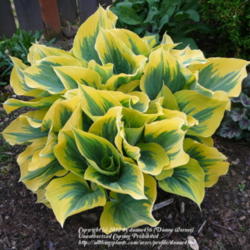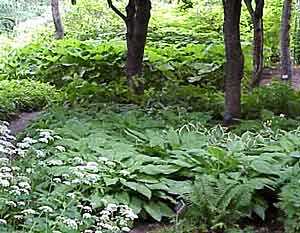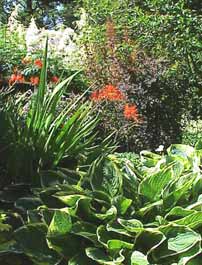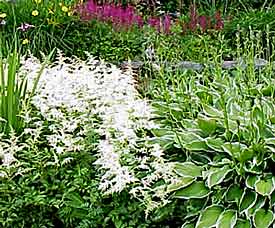
Hostas fit the bill in both situations: they adapt well to both part and full shade. Following is a list of some good companion plants for hosta, along with their USDA Hardiness Zones. (Hardiness may vary among varieties.) This is just a small selection, so don't limit yourself to these few!

Hostas have become almost synonymous with shade gardens, and with good reason: hostas are hardy, vigorous, and reliable. Although they produce attractive spikes of purple or white flowers in midsummer, hostas are grown primarily for their attractive foliage, and plant breeders have created varieties in a remarkable range of sizes and colors.
Experienced gardeners know the value of foliage plants. Many types of perennial flowers are at peak bloom for just a few weeks. Plants with attractive foliage such as hosta fill in the gaps and help create season-long interest. This is especially true in shade gardens, since many shade-loving plants have more subtle blooms or have a shorter bloom time than many familiar sun-loving plants.

Full sun is commonly defined as direct sunlight for at least 6 hours during the middle part of the day. If your garden gets direct sunshine from sunrise until noon, or from 3 p.m. on, even if that equals six hours in mid-summer, consider the site part shade. Morning and evening sunlight isn't as strong as mid-day sunlight. The same goes for sites that receive filtered or dappled sunlight all day. For areas that fit these descriptions, choose plants designate for part shade.
If your garden is located on the north side of your house or shaded by a dense tree canopy, you'll need to choose plants adapted to full shade.

There are several plants that make excellent groundcovers, including lady's mantle, lamium, lily-of-the-valley, pachysandra, and vinca. Since it can be challenging to establish a lawn in shady areas, consider replacing lawn grasses with shade-tolerant ground covers under trees or on the north side of your house -- wherever it's shady. Hostas may be planted among the ground cover plants, or can be used on their own to cover large expanses. Look for dwarf varieties for a low-growing ground cover -- some varieties grow to a height of just 8 inches.